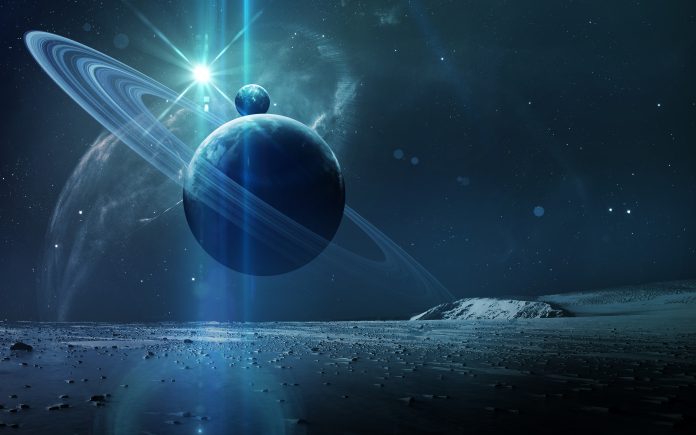Researchers are now looking at the crystalline solid form of water from different planets, to understand how planets, satellites and even comets evolved
In every country, there is an increasing need for natural resources, and global status. The recent news of water availability on the moon adds to the knowledge that Helium-3 (a rare element that could help develop the energy sector) and Rare Earth Metals (REM) are already on the moon. Right now, China produces 90% of the world’s REM – which are essential to making electronics.
The first country to extract resources from the moon will be firmly established as a crucial space power, potentially altering who controls REM. But beyond the moon, there are endless questions about what history is contained in the molecules of the planets in our universe and further afield.
Firstly, let’s talk about clathrate hydrates
Aside from the gaseous, liquid, and solid states we are accustomed to, water can form a different type of crystalline solid called clathrate hydrate. This kind of water is the preferred currency of the planets in our universe.
They look similar to ice, but clathrate hydrates have actually small water-based cages in which smaller molecules are trapped. These trapped “guest” molecules are essential for preserving the crystalline structure of clathrate hydrates, which would otherwise “collapse” into regular ice or water.
Clathrate hydrates play a crucial role in the evolution of a planet or satellite’s atmosphere – volatile gases such as methane are stored in these crystals and released slowly over geological timescales.
Because of the enormous amounts of time required for clathrate hydrates to form and dissociate at cryogenic temperatures, it has been very difficult to conduct experiments on Earth to predict their presence in other celestial bodies.
How did the scientists access this celestial water?
The short answer is that they sadly didn’t. It is too difficult to conduct experiments on so many different planet’s clathrate hydrates at once.
This water being analysed by a team of scientists is a combination of both theory and experimental data. Unfortunately, there is no literal water from other planets available to the team. They’re working out what the water explains about planetary history, through the magic of maths.
Lead scientist, Professor Hideki Tanaka from Okayama University, Japan, explains: “For many years, we have been developing rigorous statistical mechanics theory to estimate and predict the behavior of clathrate hydrates.
“In this particular study, we focused on extending this theory to the cryogenic temperature range-down to the 0 K limit.”
Recreating cryogenic conditions found outside Earth?
A crucial challenge for the team was finding a way to theoretically establish conditions for the formation and dissociation of clathrate hydrates, under thermodynamic equilibrium at extremely low temperatures.
This was necessary to then use the renowned model of water/hydrate/guest coexistence in clathrate hydrates, which was proposed by van der Waals and Platteeuw in 1959.
Tanaka, Yagasaki, and Matsumoto revised this theory to fit the cryogenic conditions that would be found outside Earth and corroborated its validity based on thermodynamic data gathered by space probes.
It turns out that Europa and Ganymede only contain regular ice
Then, the scientists used this new theory to analyse the states of water on Saturn’s moon Titan, Jupiter’s moons Europa and Ganymede, and Pluto.
According to their model, there is a remarkable contrast in the stable forms of water found on these celestial bodies. Whereas Europa and Ganymede contain only regular ice in contact with the thin atmosphere, all the water on the surface of Titan, and possibly Pluto, is in the form of clathrate hydrates.
The researchers have pushed a theory forward, which will make it easier to analyse planets in our 14 billion year old universe.
“It is remarkable,” says Tanaka, “that one specific state of water appears exclusively in different satellite and planetary surfaces depending on temperature and pressure. In particular, the water in Titan seems to be completely in the form of methane-containing clathrate hydrates all the way up to the surface from the top of its subsurface ocean.”











